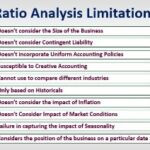
When the price of a product rises relative to alternative products in the same market, consumers will substitute one of the lower-priced alternatives for the now higher-priced product. The consumption function is a valuable tool for understanding the economic cycle and guiding economists and policymakers as they make key decisions about investments, as well as monetary all about advance payments in tally erp 9 and fiscal policy. Amanda Bellucco-Chatham is an editor, writer, and fact-checker with years of experience researching personal finance topics. Specialties include general financial planning, career development, lending, retirement, tax preparation, and credit. Consumption can also be measured in a variety of different ways such as energy in energy economics metrics.
What Shifts the Consumption Function Forward?
Macroeconomists are interested in aggregate consumption for two distinct reasons. First, aggregate consumption determines aggregate saving, because saving is defined as the portion of income that is not consumed. For example, imagine that Congress wants to enact a tax rebate to spur economic activity through consumer spending. MPC can be used to assess the likelihood of which household’s, based on their income, would have the greatest likelihood or propensity to spend the tax cut, rather than save it. Goods and services are affected by income and substitution in different ways.
The consumption of goods and services can be affected by changes in a consumer’s income, price levels, and the availability of market substitutes. The income effect is the resulting change in demand for a good or service caused by an increase or decrease in a consumer’s purchasing power or real income. what is run rate arr definition formula and examples The substitution effect occurs when consumers replace one product with another due to price changes and personal finances. In the expenditure-output model, how does consumption increase with the level of national income?
Behavioural economics, Keynesian consumption function
The MPS reflects the savings amount or leakage of income from the economy. Leakage is the portion of income that’s not put back into the economy through purchases of goods and services. The higher the income for an individual, the higher profitability index calculator the MPS as the ability to satisfy needs increases with income. In other words, each additional dollar is less likely to be spent as an individual becomes wealthier.
Consumption and Disposable Personal Income
- Output on the horizontal axis is conceptually the same as national income, since the value of all final output that is produced and sold must be income to someone, somewhere in the economy.
- Watch this next video for more practice in graphing the consumption function.
- He is known as the father of modern macroeconomics and the founder of Keynesian economics.
- The substitution effect occurs when consumers replace one product with another due to price changes and personal finances.
Workers have a fraction of their paychecks withheld for taxes each pay period; Mr. Bush directed that this fraction be reduced in 1992. The change in the withholding rate did not change income tax rates; by withholding less in 1992, taxpayers would either receive smaller refund checks in 1993 or owe more taxes. Notice from the curve in Figure 28.2 “Plotting a Consumption Function” that when disposable personal income equals 0, consumption is $300 billion.
Marginal Propensity to Consume vs. to Save: What’s the Difference?
An increase in stock and bond prices, for example, would make holders of these assets wealthier, and they would be likely to increase their consumption. An increase in real wealth shifts the consumption function upward, as illustrated in Panel (a) of Figure 28.4 “Shifts in the Consumption Function”. Plots of consumption and disposable personal income over time suggest that consumption increases as disposable personal income increases. The MPC is also vital to the study of Keynesian economics, which is the result of economist John Maynard Keynes. Keynesian economics was developed during the 1930s in an attempt to understand the Great Depression. Keynes advocated for increased government expenditures and lower taxes to stimulate demand and pull the global economy out of the depression.
We learned in an earlier chapter that the relationship among the price level, real wealth, and consumption is called the wealth effect. A reduction in the price level increases real wealth and shifts the consumption function upward, as shown in Panel (a). An increase in the price level shifts the curve downward, as shown in Panel (b). Indeed, it seems likely that virtually all consumption choices could be affected by expectations of income over a very long period.

So, while there is disagreement on the size of the MPC, all conclude that the impact was non-negligible. As saving is a complement of consumption, the MPS reflects key aspects of a household’s activity and its consumption habits. For example, if the marginal propensity to save is 10%, it means that out of each additional dollar earned, 10 cents is saved. The consumption function was introduced by economist John Maynard Keynes.
